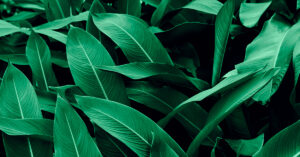Nitrogen is one of the most important elements of plant tissues, present in protein substances, chlorophyll, nucleic acids (DNA and RNA), glucosides, and alkaloids.
Especially in younger tissues, this element is present in a percentage of 5-6%, while with 3% in old ones.
Thanks to nitrogen, plants express their highest lushness and this is the reason why soils need an appropriate nitrogen fertilization supplying the right amount of such substance.
Nitrogen: too much or too little.
Nitrogen deficiency can cause several problems, such as: limited growth in plants; smaller leaves than normal, more likely to fall early in autumn; chlorosis; stunted plant growth.
On the other hand, an excess of nitrogen is not positive for the plant too, causing diseases such as: imbalances in biological cycle; poor tissue lignification; easier exposure to parasitic diseases. Without forgetting that an excessive vegetative lushness leads to greater water consumptions and an accumulation of nitrates in leaves.
Nitrogen in soil: the origins.
The bigger part of nitrogen in soil comes from the breakdown processes of organic substances. Another amount is the result of nitrogen-fixation processes through the action of microorganisms.
The last part of nitrogen, though in small doses, comes from the processes of fragmentation of soil’s bedrock and atmospheric precipitations.
Then, plants can absorb the substance in different forms:
- organic – nitrogen comes from the decomposition of animal and vegetal remains present in soils.
- ureic – nitrogen comes from the supply of fertilizers
- ammoniacal – nitrogen mainly comes from the decomposition of organic matter and the supply of fertilizers.
- nitric – nitrogen comes from the nitrification of ammoniacal nitrogen, the supply of fertilizers and the atmospheric precipitations.
The availability of nitrogen in grounds may vary according to the soil types and climate conditions. Besides, since this element can be used by plants only in mineralized form (that is in solid or liquid form obtained by organic or industrial transformation processes), to be absorbed it must be available in soils or supplied through the use of fertilizers.
When is the best moment for fertilizing with nitrogen?
Most nitrogen fertilizations take place in spring, the period of full vegetative development.
Moreover, it is better to avoid fertilizing during too dry or rainy times.
In the first case we advise using more soluble nitric fertilizers, while during wet seasons ammoniacal fertilizers are recommended, as they’re less subject to leaching. Ammonium nitrates are suitable in both cases, since they contain a nitric part and an ammoniacal one. There are eventually some slow-release fertilizers, which gradually release nitrogen to the soil.
All Hydro Fert products, highly innovative, provide appropriate amounts of nutritional substances to soils, proving to be very useful for any type of soils and with any weather conditions.



